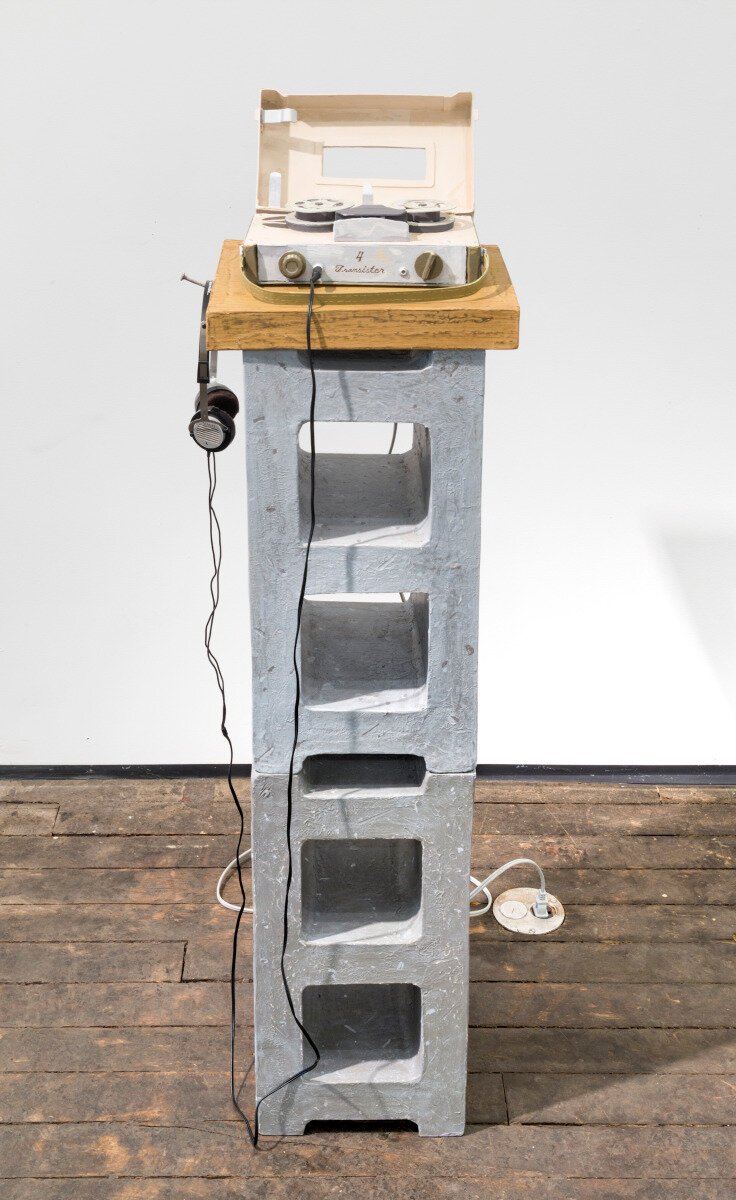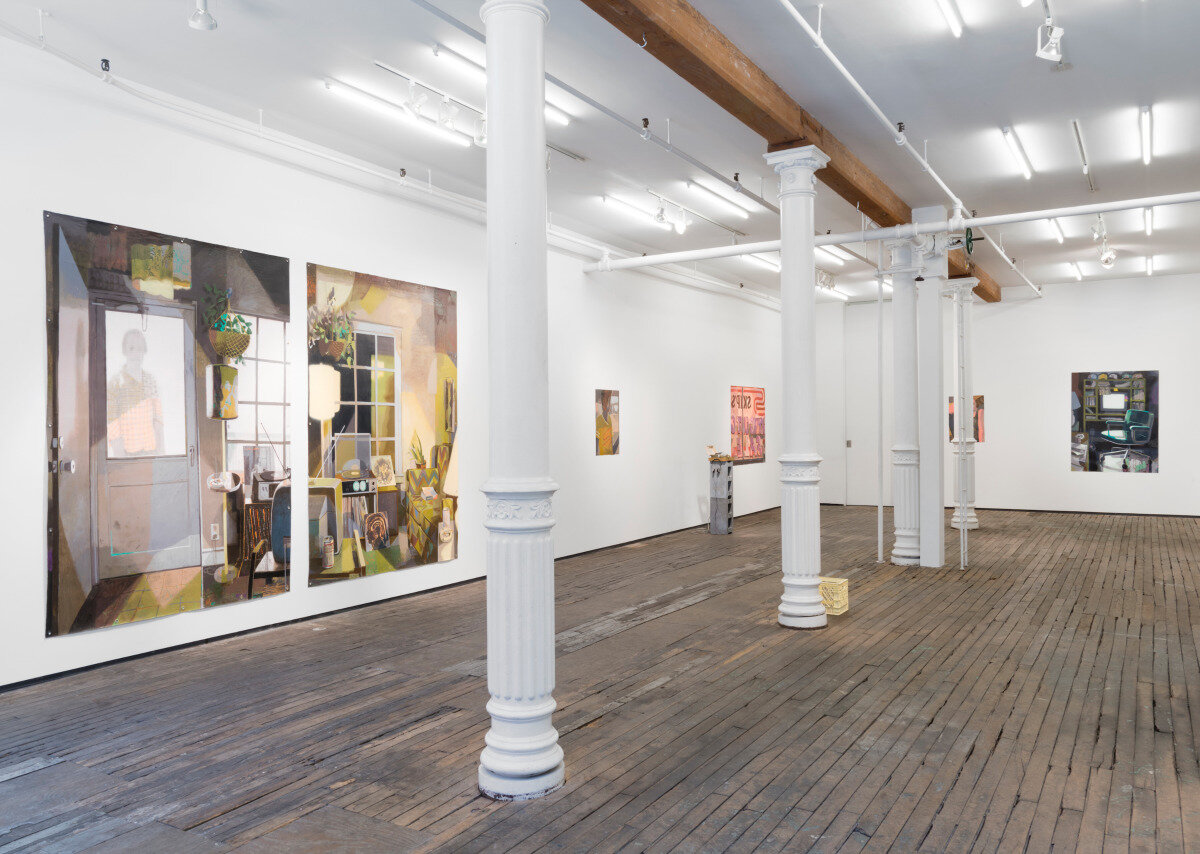
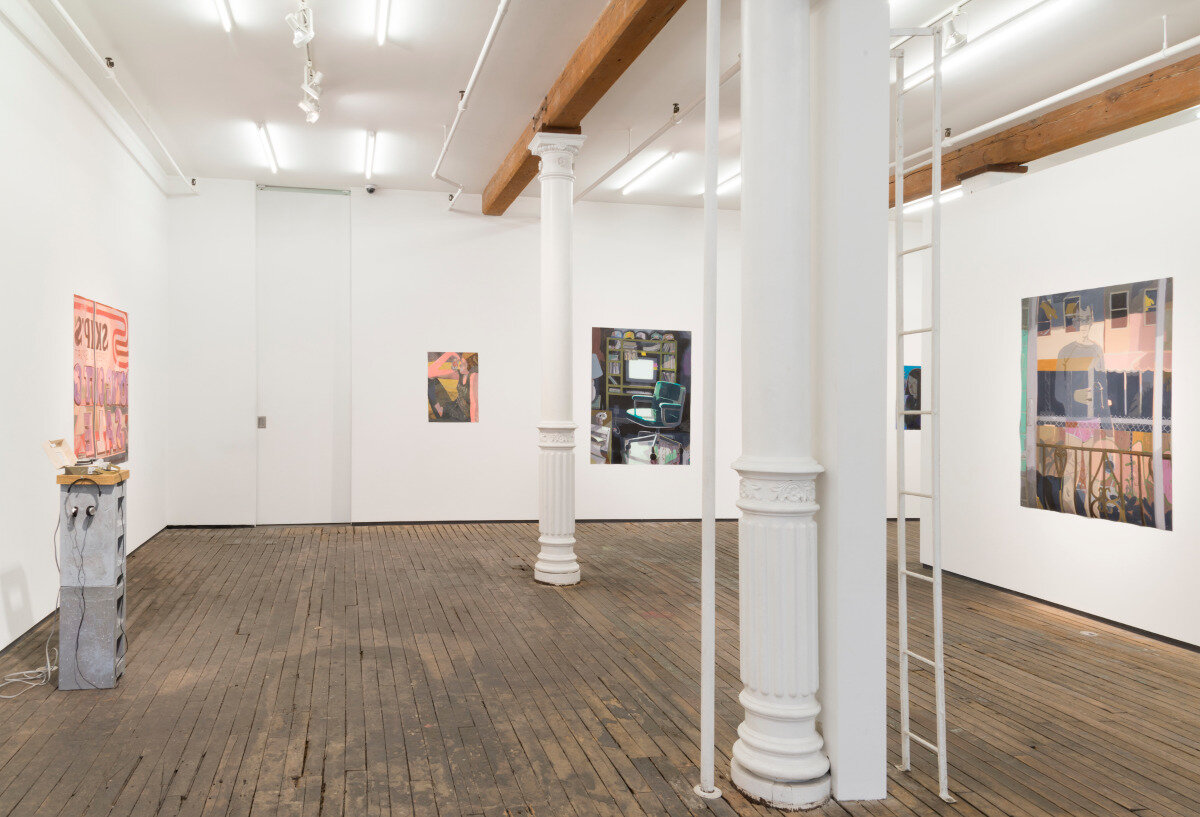
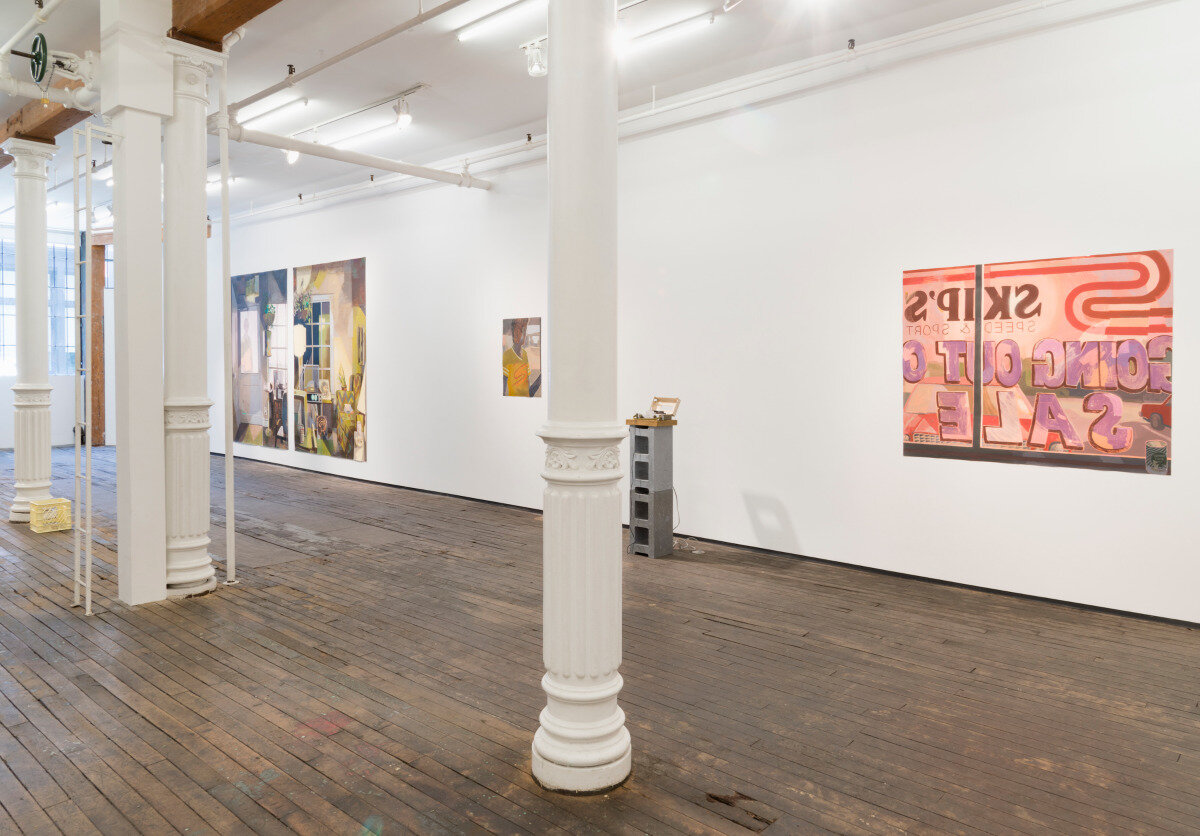
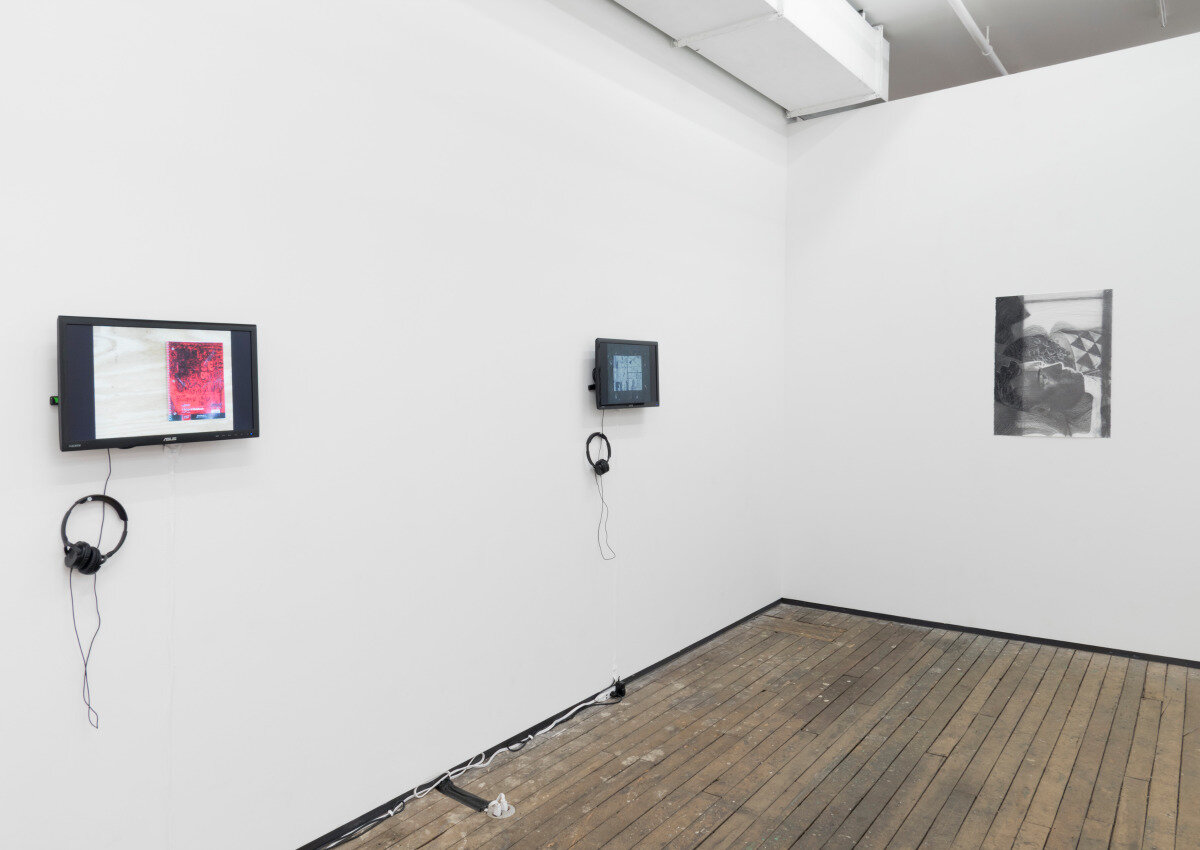
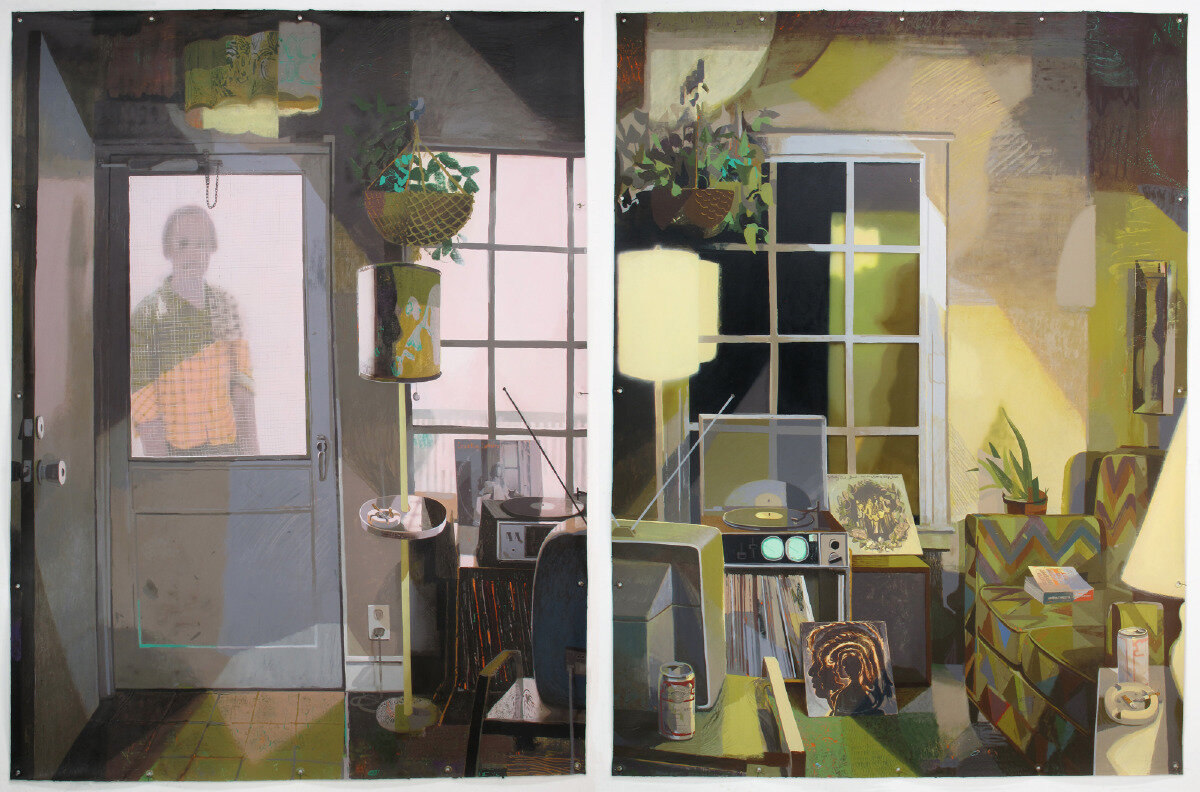
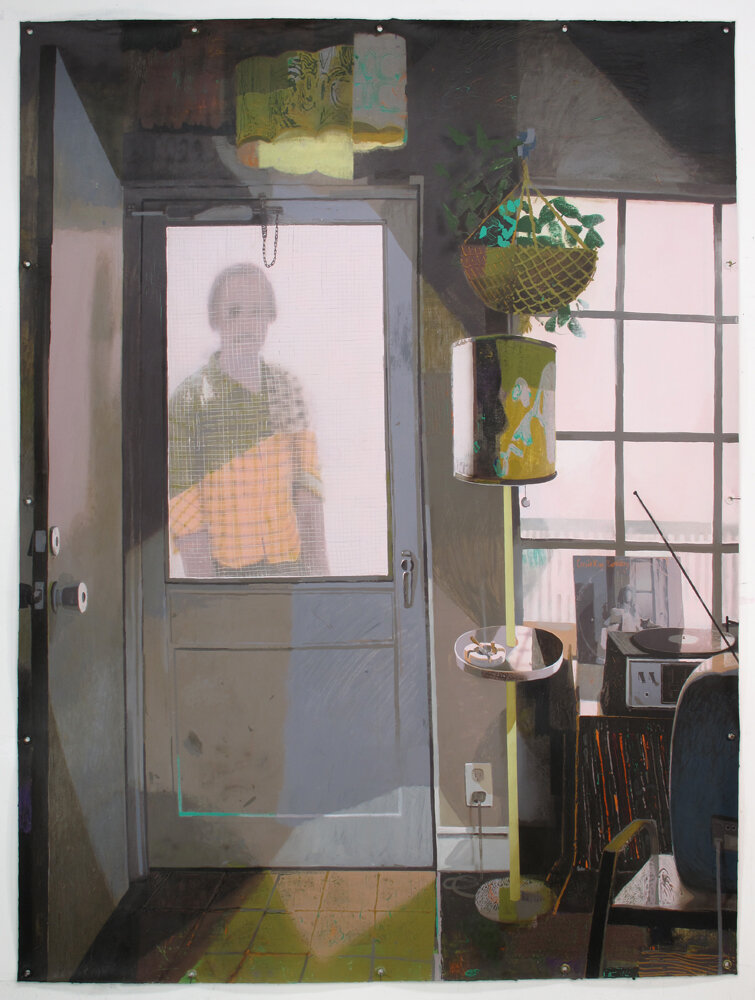
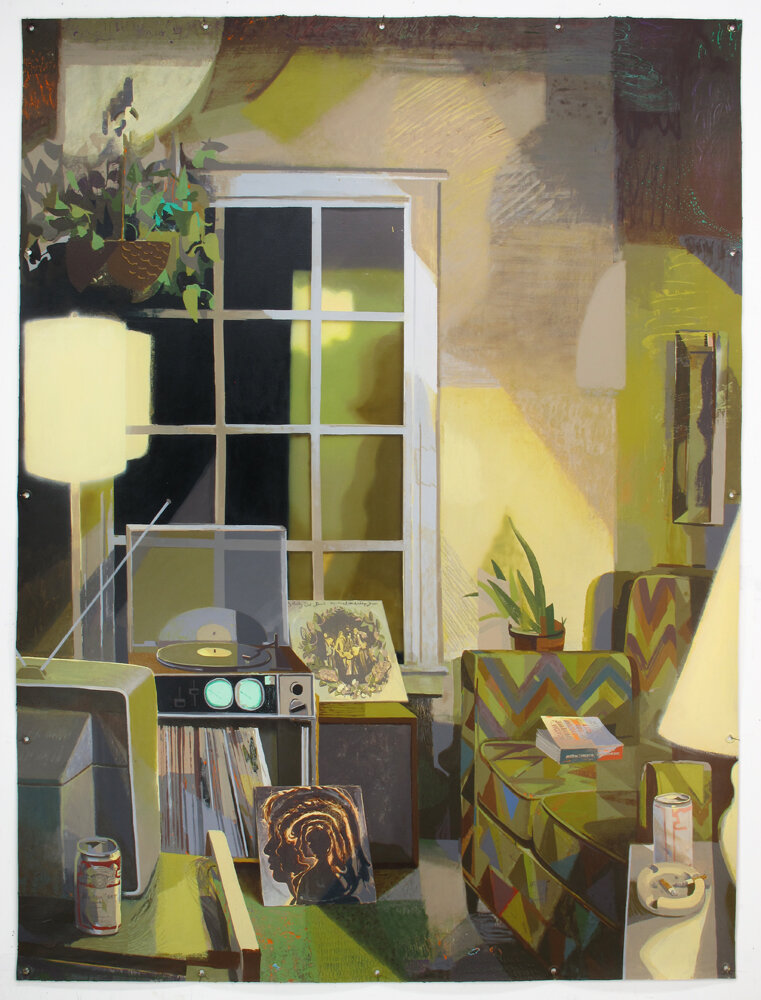
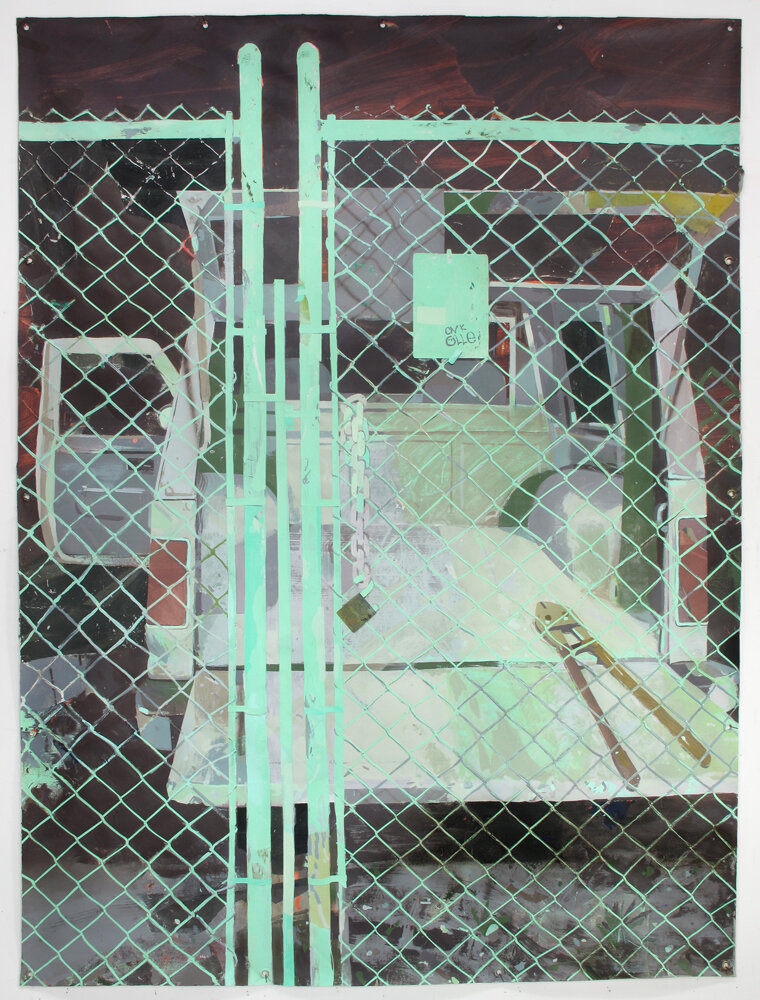
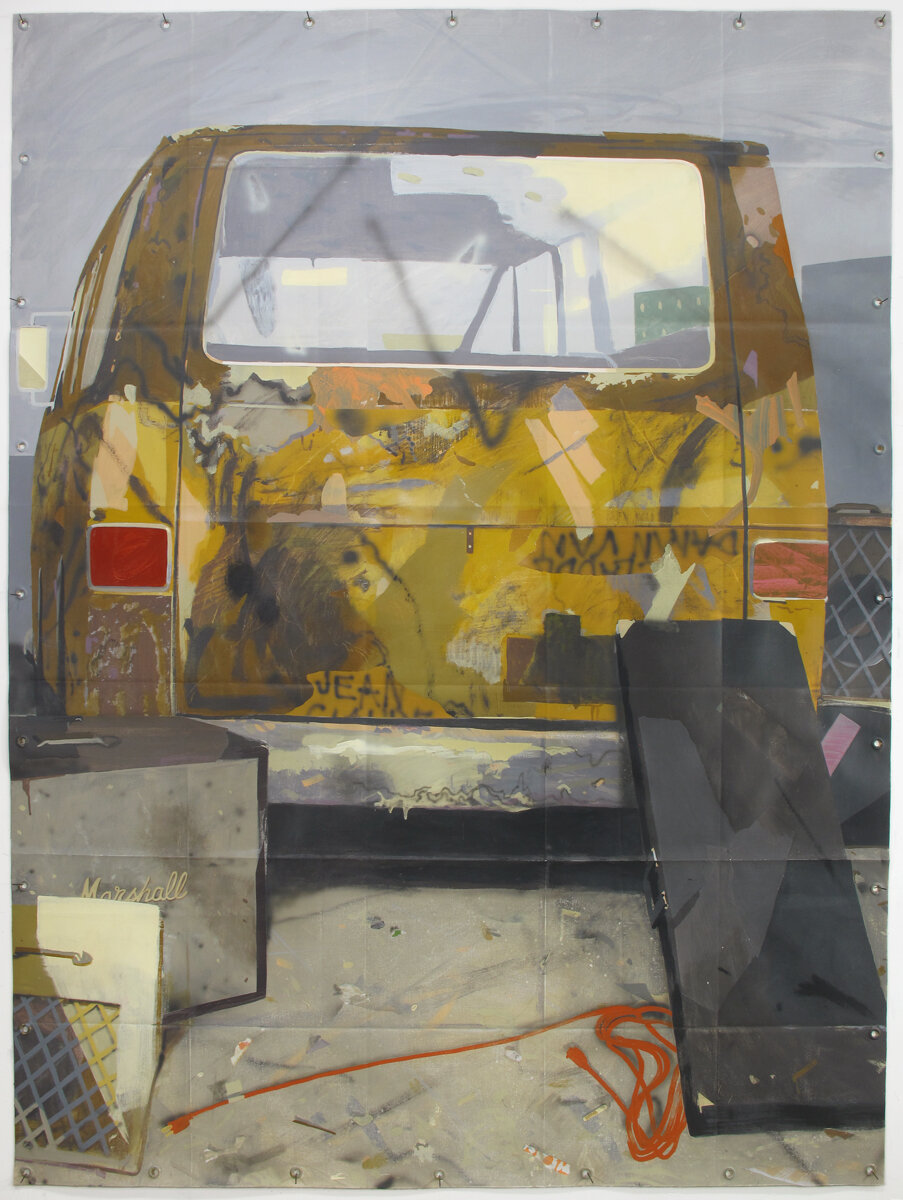
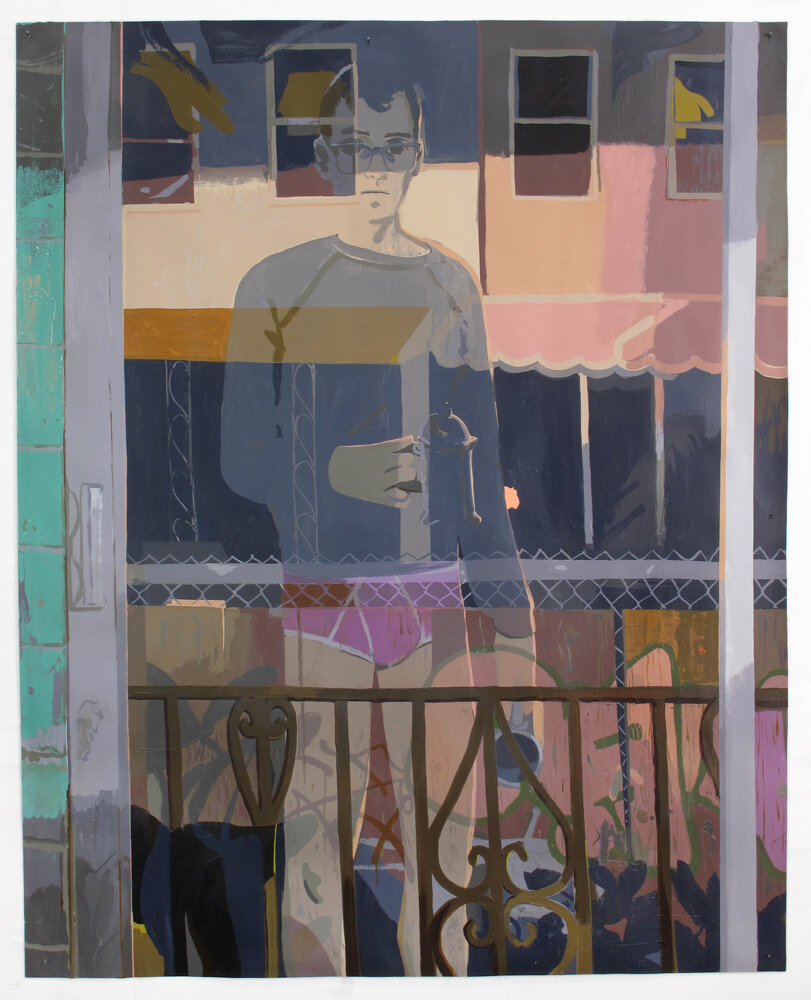
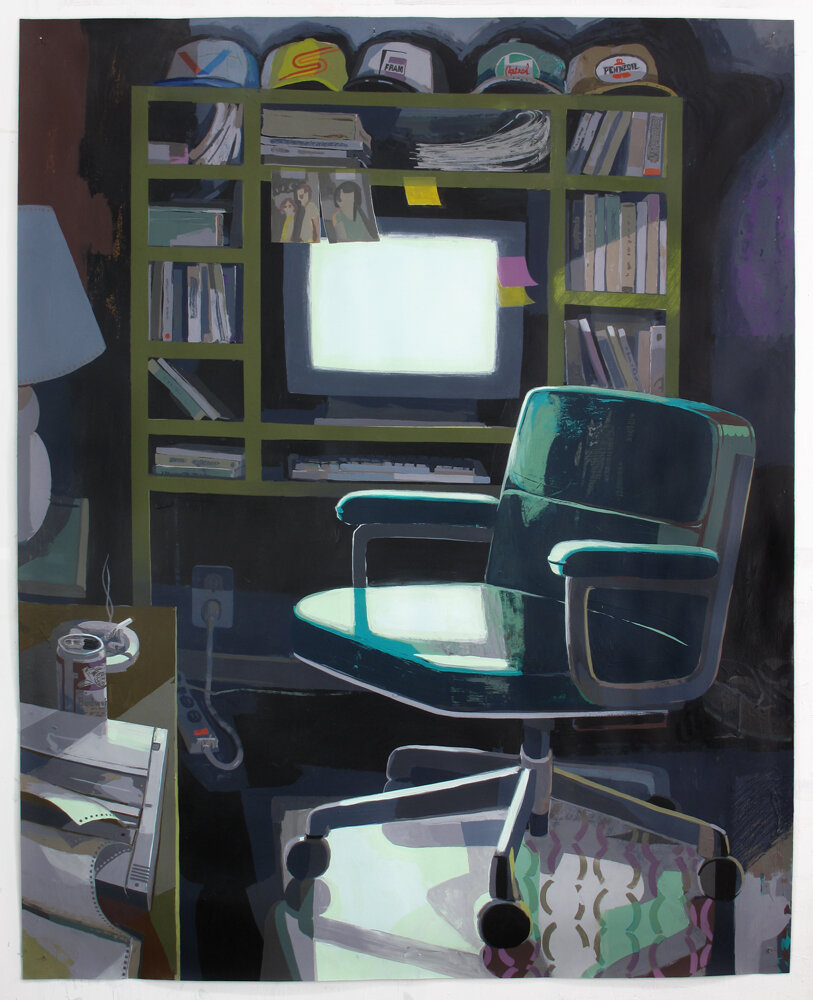

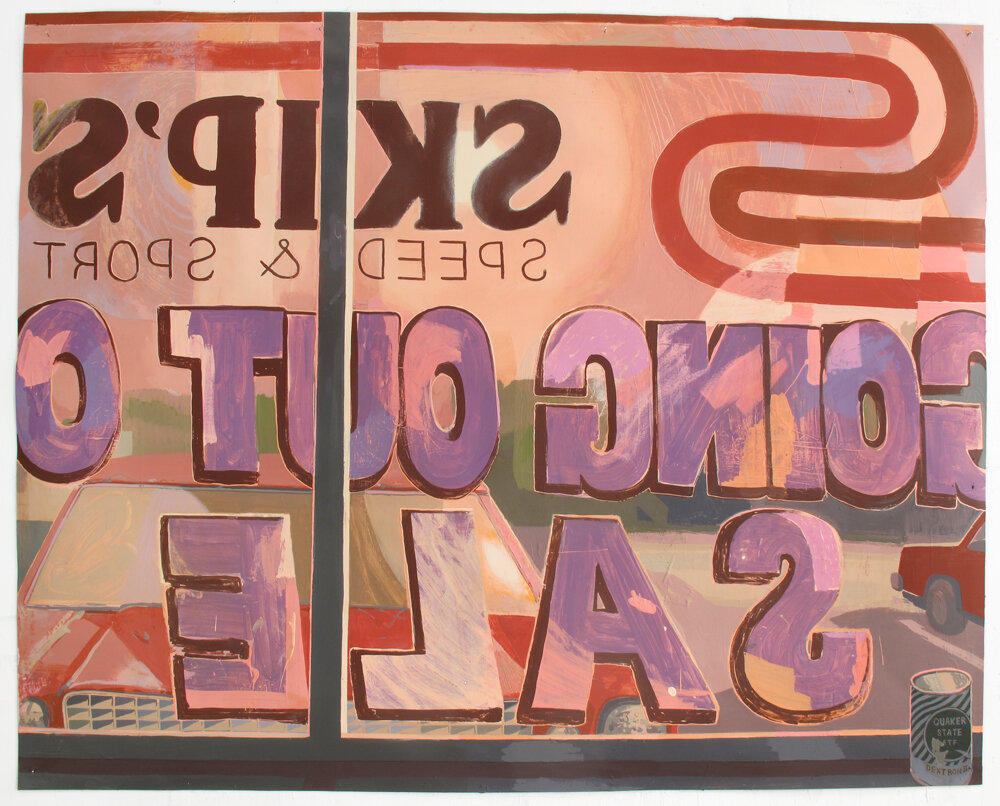
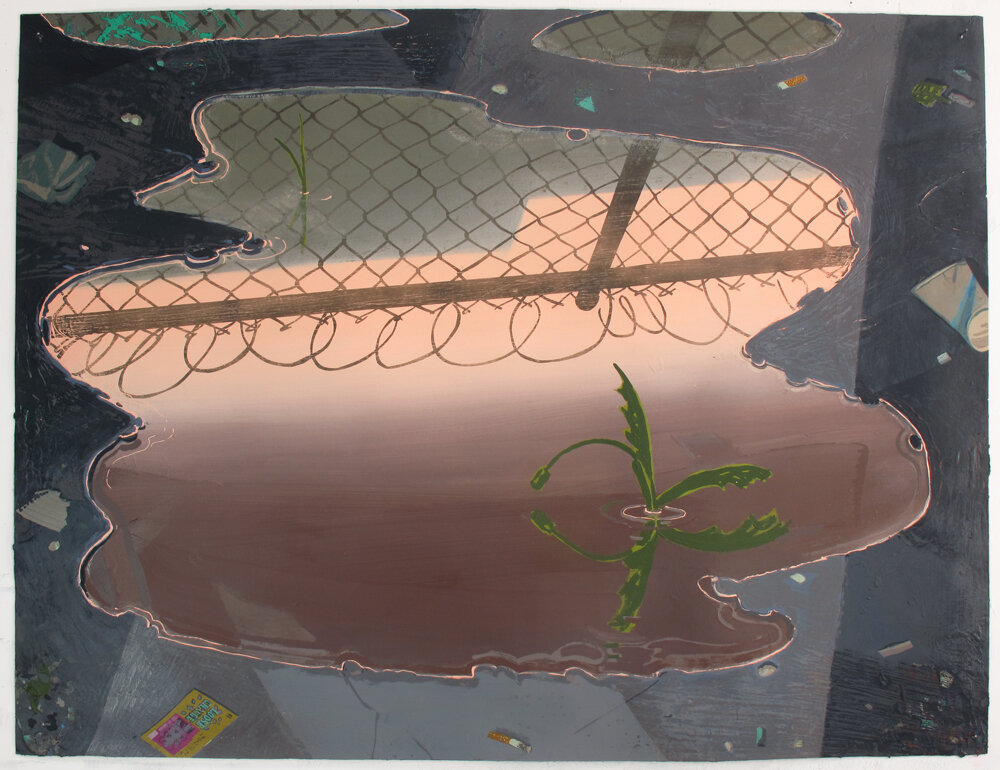
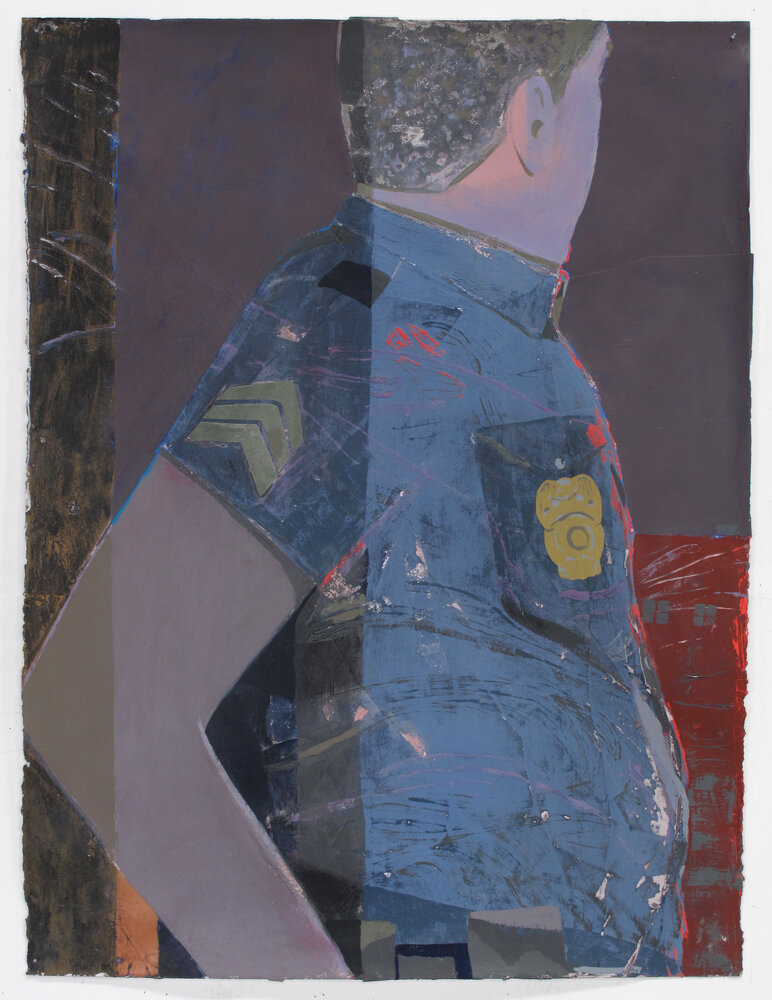
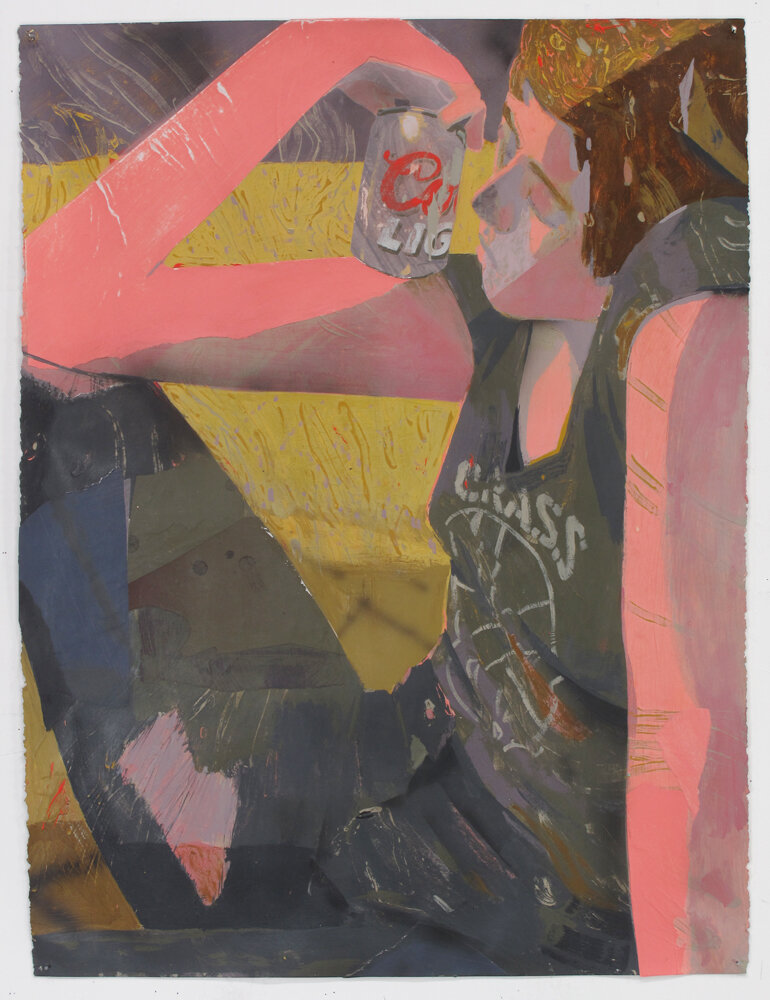
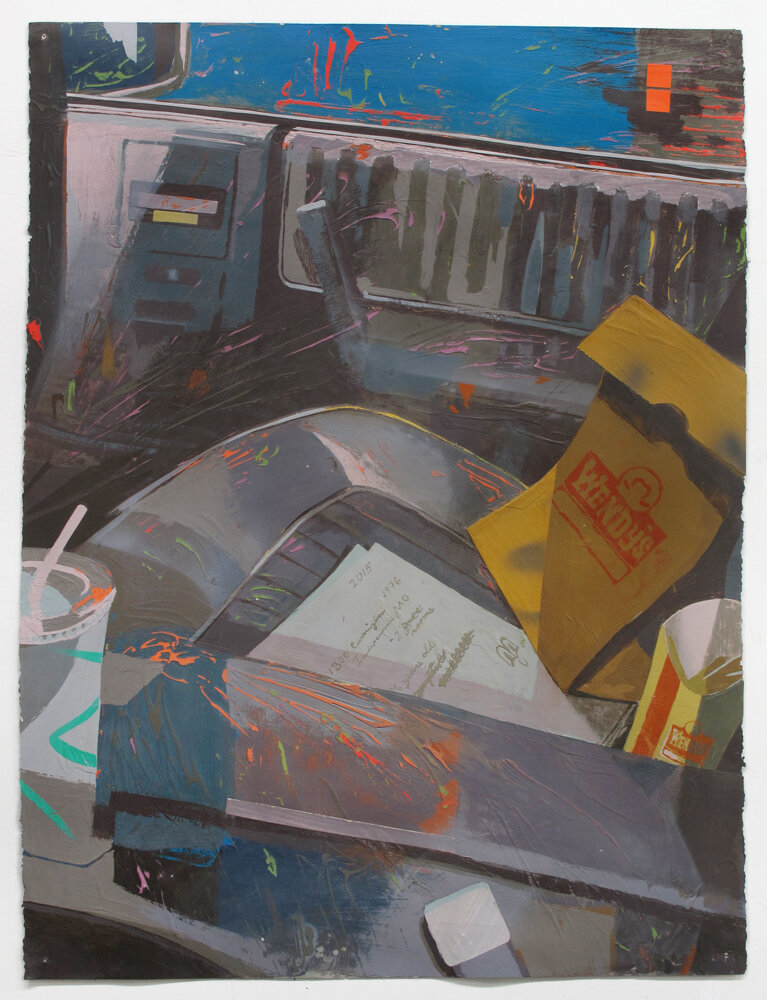
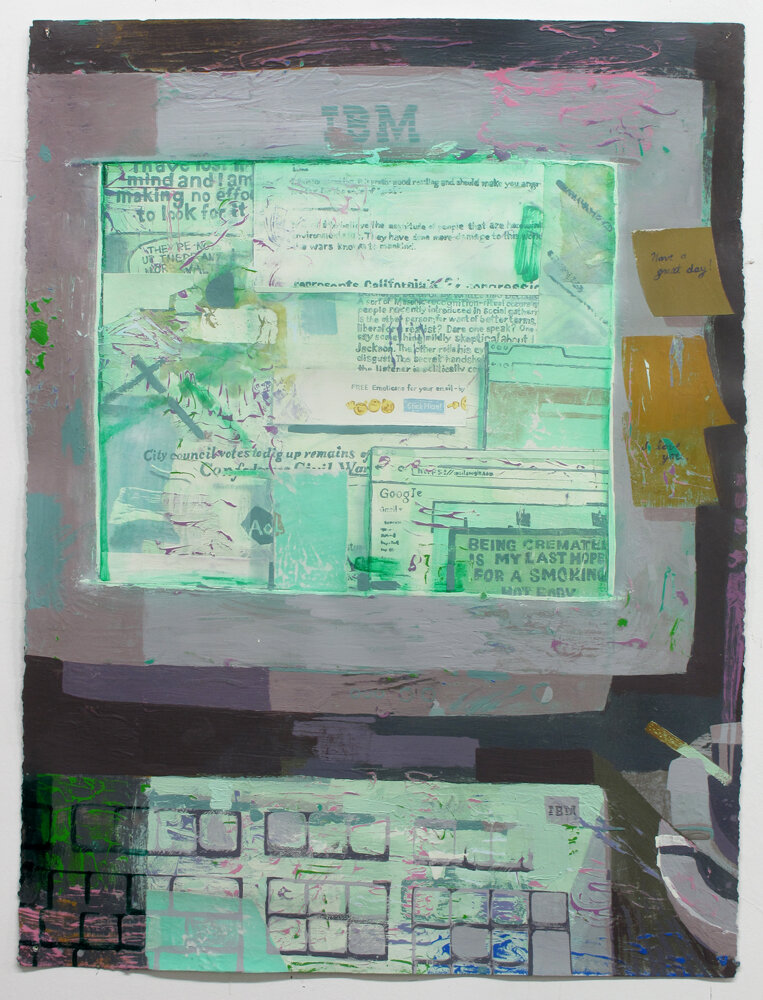
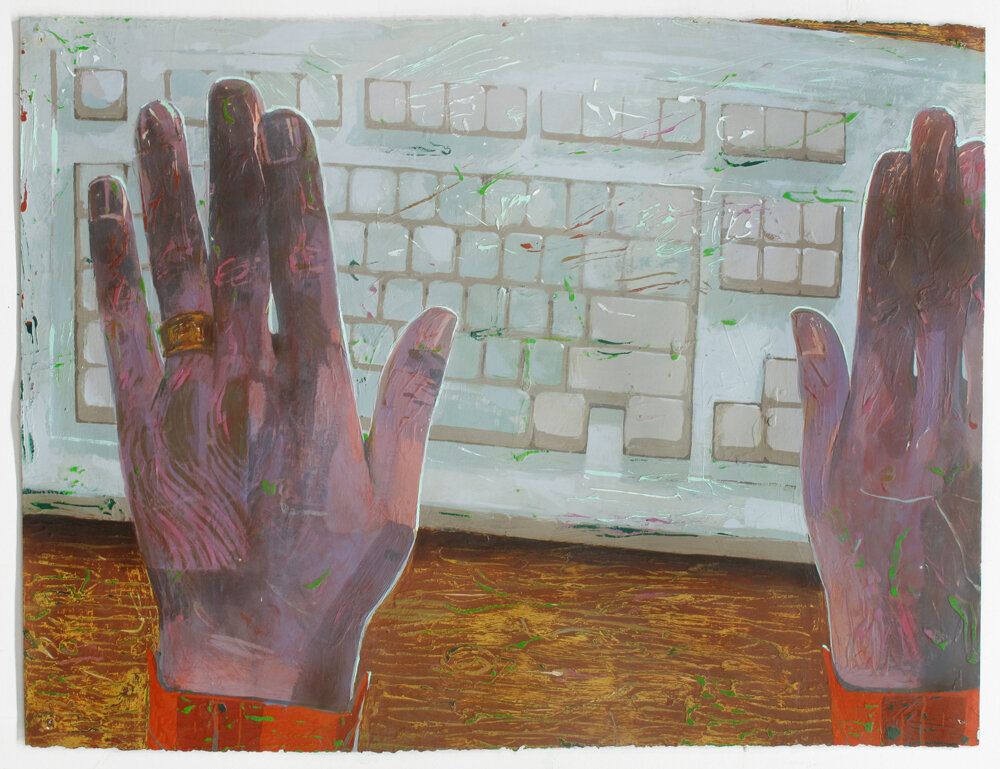
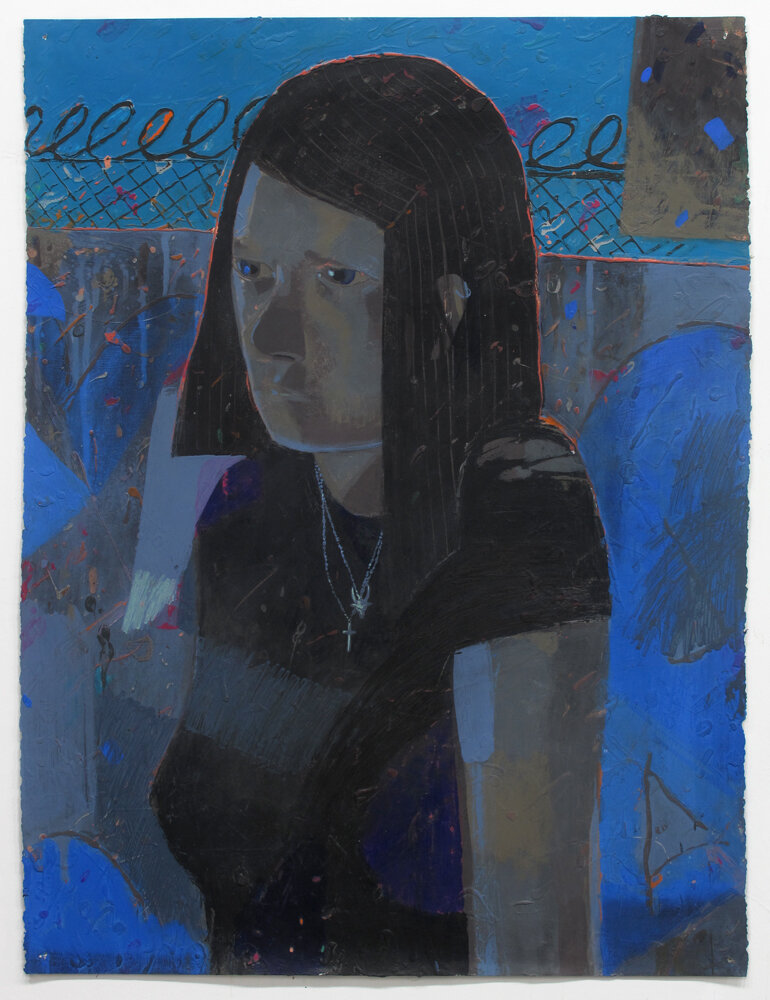
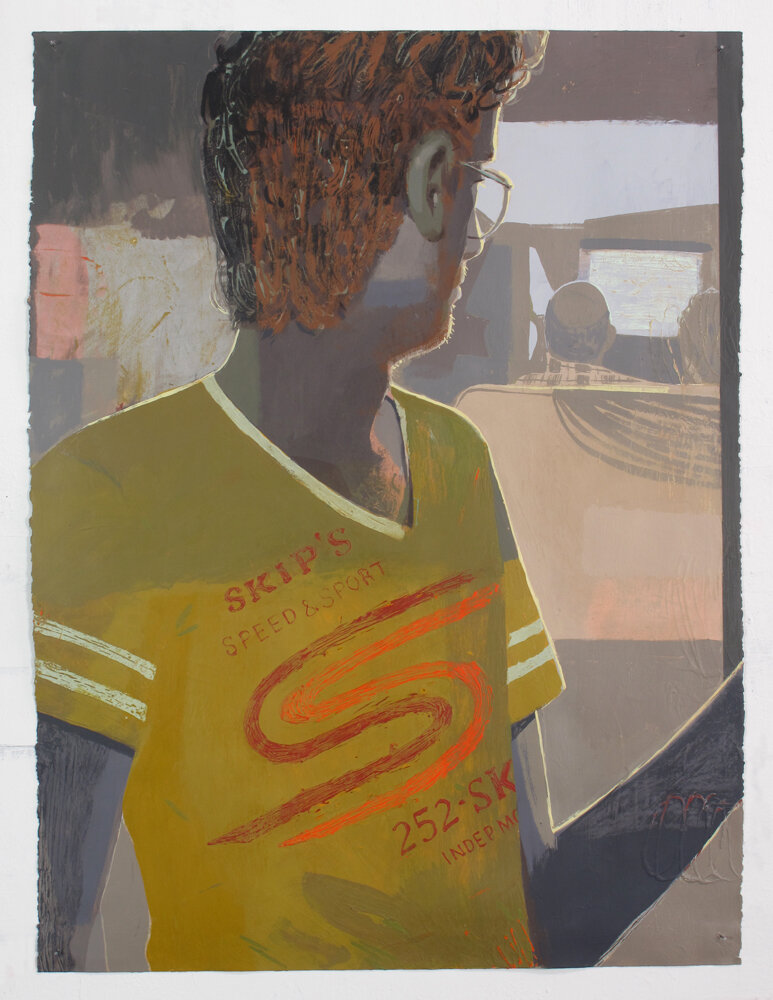
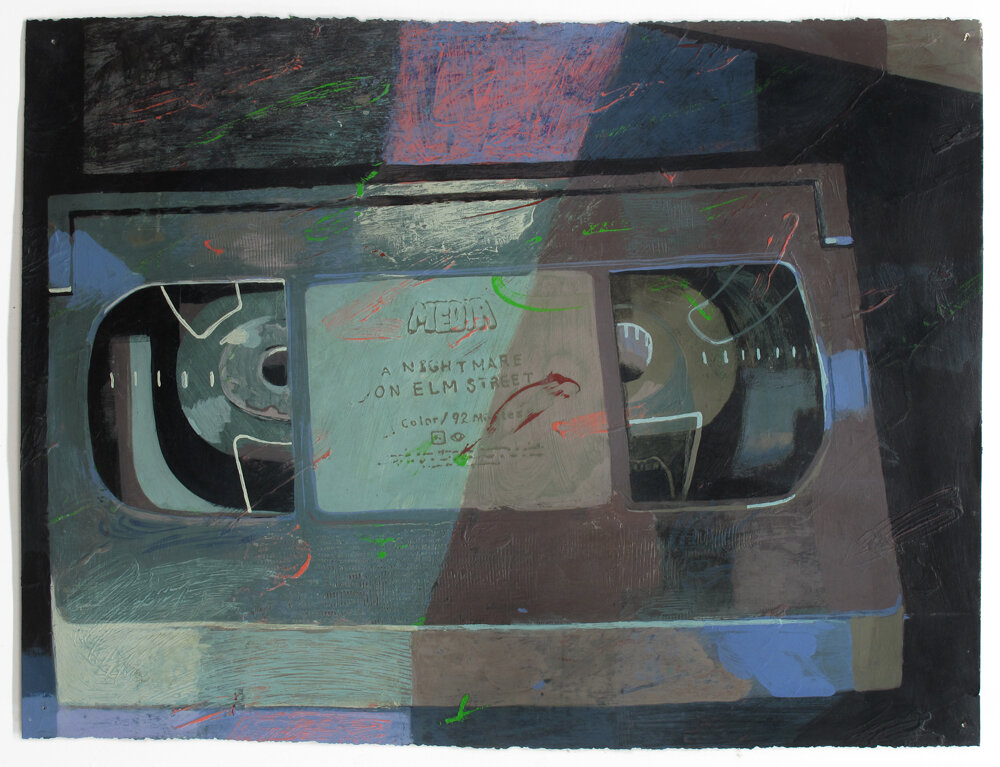
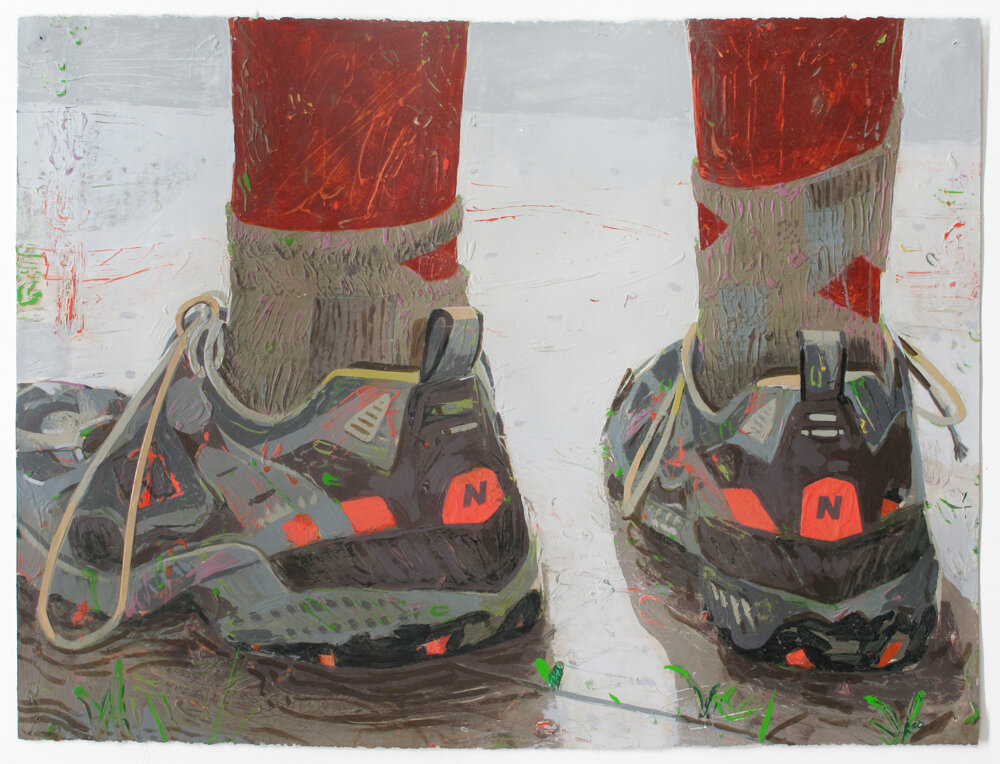
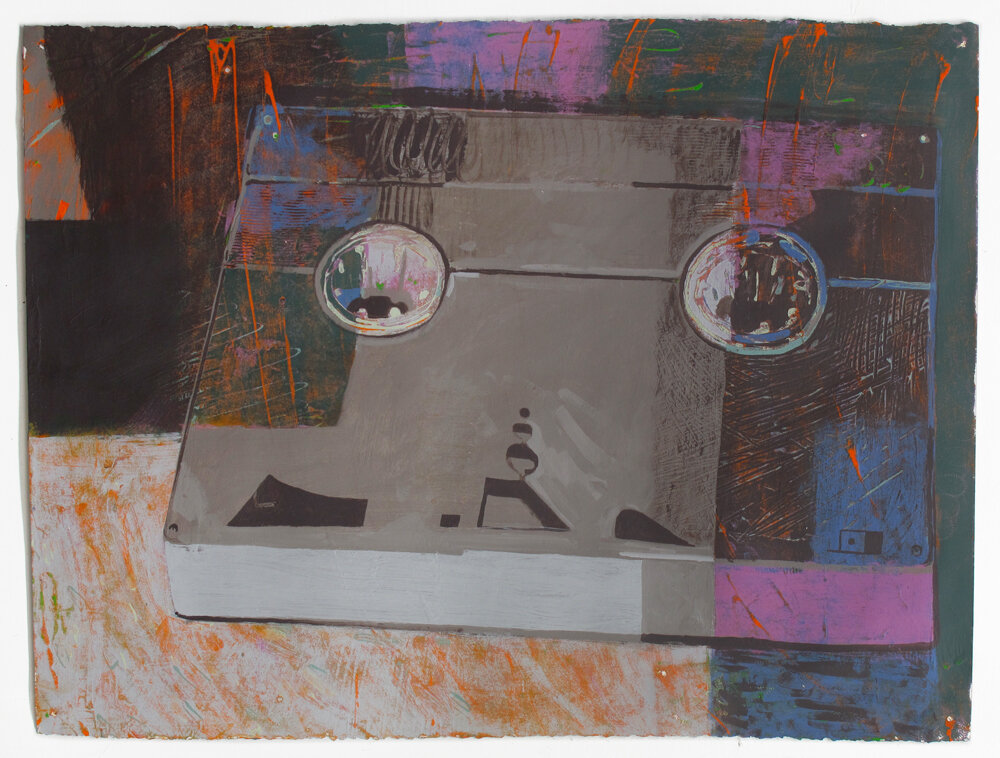
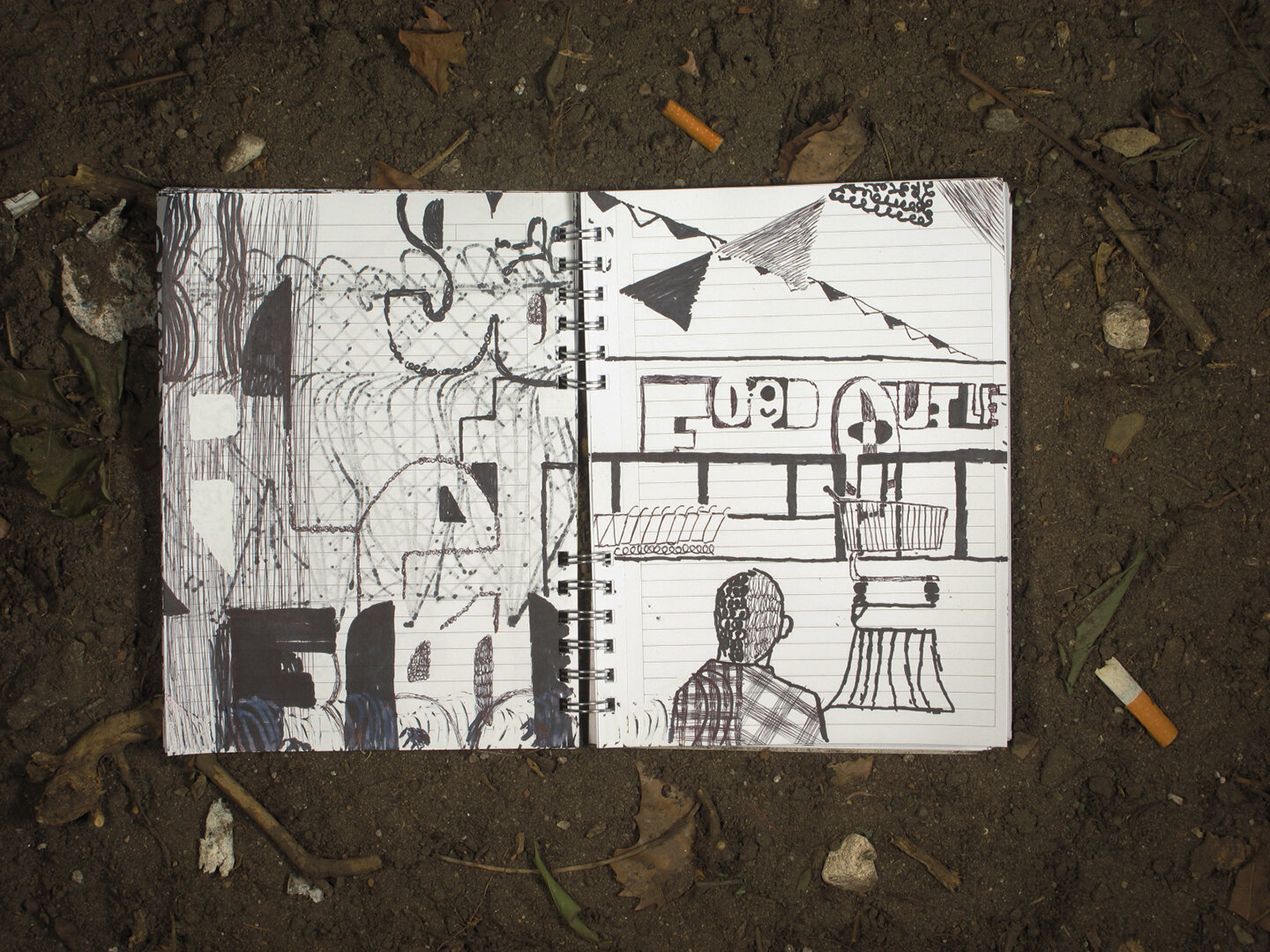

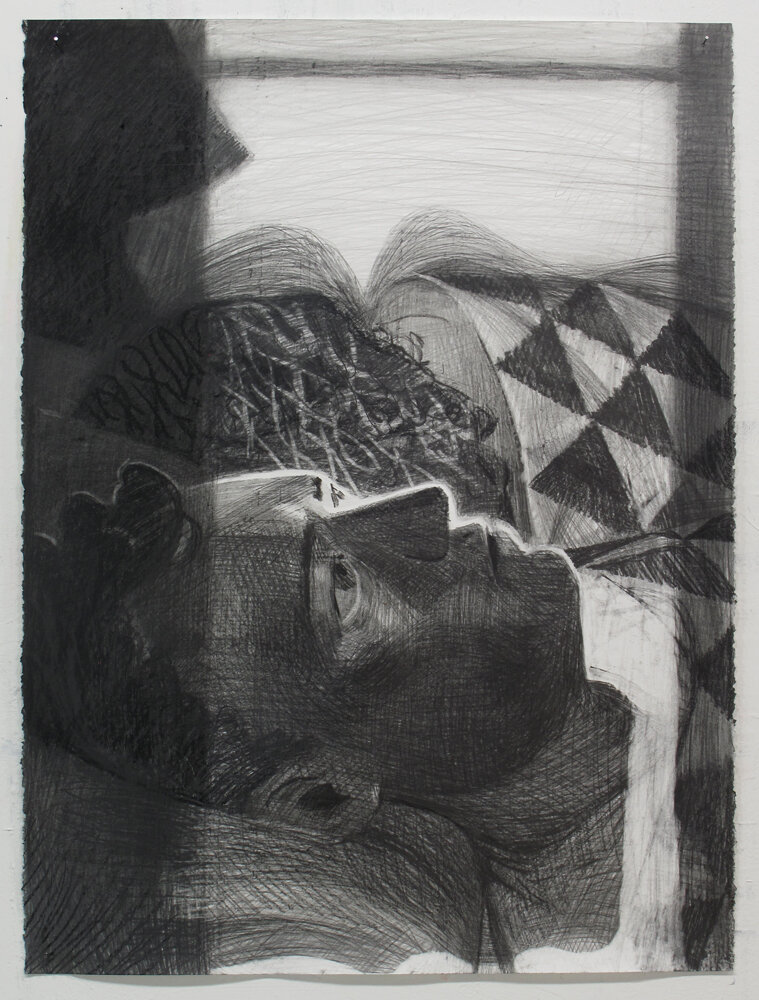
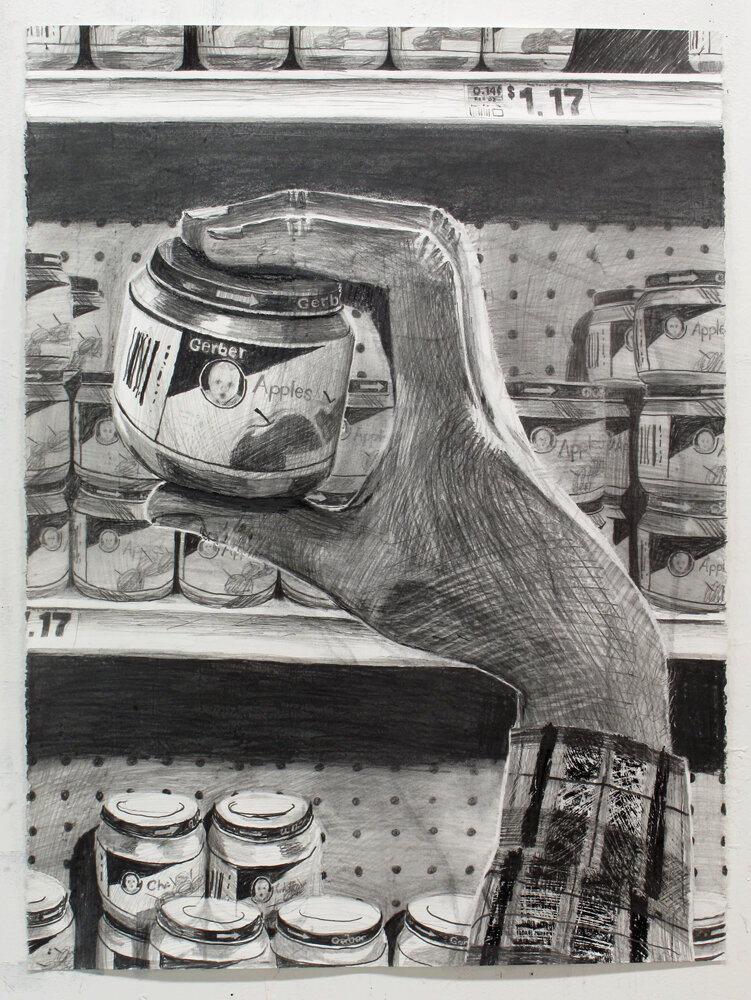
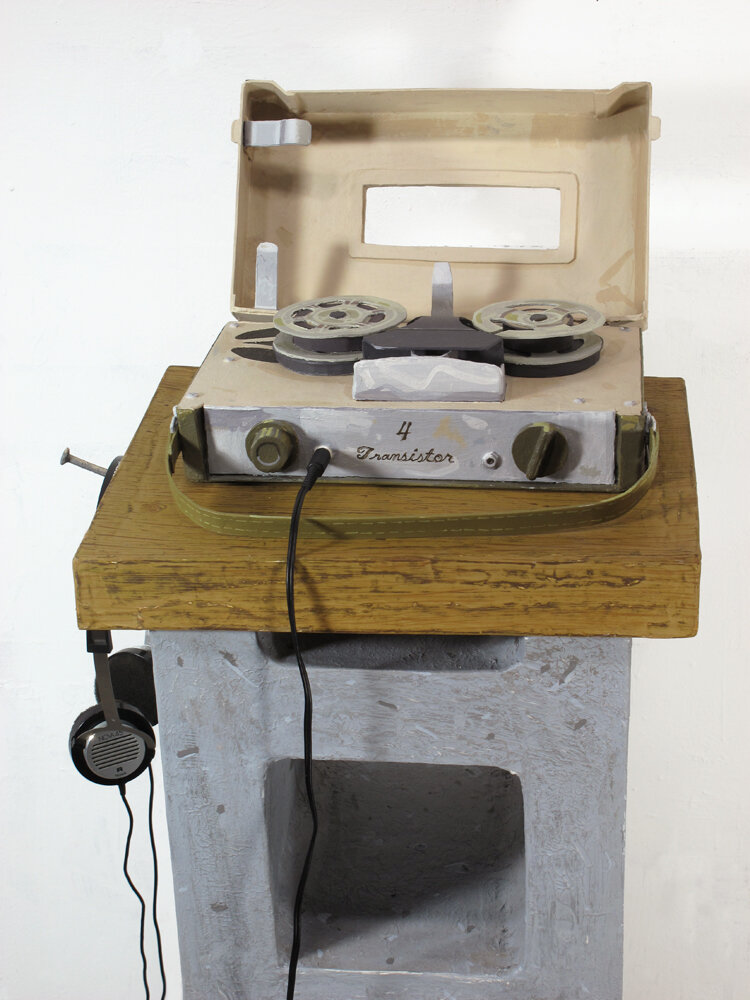
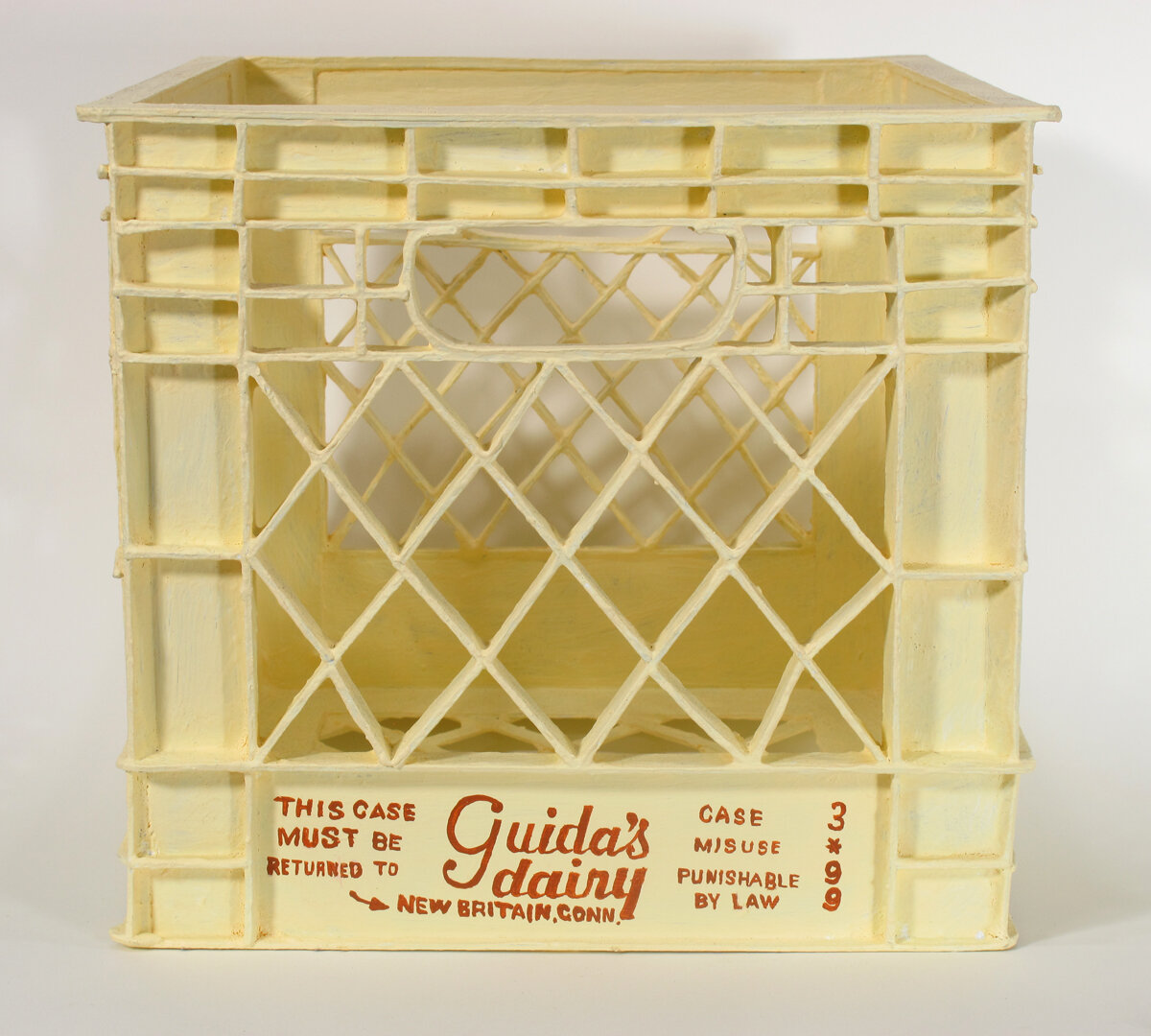
NEW YORK
Matt Bollinger
Independence, MO
May 11 - June 26, 2016
PRESS:
Johnson, Ken, “What to See in New York Galleries This Week” New York Times, June 16, 2016
Yau, John, “End of the Road: Matt Bollinger at Zürcher Gallery” Hyperallergic (online), May 15, 2016
In Independence, a suburb of Kansas City, Missouri, Matt Bollinger’s father, Skip, owned a retail store that sold auto parts. Bollinger’s history begins not in an artist’s studio but in his father’s garage. For Matt, the adventure started when his father’s business, Skip’s Speed and Sport, closed. When the family business could not continue due to the competition with larger chains and his father moved the business into the family home, the garage took on a mythical dimension. The garage appeared to the young artist as a reservoir of forms.
_
Through conjuring the daily life of the youth of his generation and searching his cultural roots in music as well as in literature, Bollinger’s work took on a deeply autobiographical character.
He sets each of them back in place in the two big drawings currently on display at the Museum of Contemporary Art in St Etienne (France). The many small paintings of « detail » views and the two big canvasses shown here, Independence I and II (2016), complete the puzzle. Those two paintings show « interiors » (Independence I is the father’s interior whose portrait appears behind the door and Independence II is the mother’s interior whose silhouette can be seen reflected in the window on the right). One will notice a certain number of similar objects: lampshades, the suspended plant, the turntable on a low cabinet full of records. The television set is the only object directly shared between the two paintings. These objects create a parallel between the two works suggesting they form a diptych, the left part (Independence I) the masculine element and the right part (Independence II) the feminine element.
_
Thinking of the two big paintings along with many paintings of more focused views, one remembers the Quattrocento alterpiece made of large main panels supported by predella, small narrative paintings developing the general theme. All are built with the greatest rigor. The figures and objects are set in an architecture which is a way to invent a new sense of space, a space that Matt Bollinger doesn’t imagine as unified but, on the contrary, fragmented by the infinite play of reflection, which he paints with precision. Of this process Bollinger states: « The physical construction of the paintings mirrors the process of unearthing the past. The paintings begin with layers of chaotic color, marks that I initially hide under more naturalistic depictions. Then, through sanding and scraping, I reveal these marks and create present evidence of past activity. The subject of the work is then mediated through a tangible history of mark making and erasure » By way of painting, fiction takes over from memory. —Bernard Zürcher
Matt Bollinger was born in 1980 in Kansas City, MO. He lives and works in Brooklyn, NY.
He received his BFA from the Kansas City Art Institute in 2003 and his MFA in Painting from the Rhode Island School of Design in 2007.
French:
Independence est une ville du Missouri faisant partie de l’agglomération de Kansas City, siège du comté de Jackson. Ici commence l’histoire de Matt Bollinger, dans un atelier qui fut d’abord celui du garage de son père, une histoire de mécanique mais pas seulement car ce serait faire peu de cas de la réalité esthétique d’un tel lieu où la présence des carrosseries automobiles ne pouvaient que captiver un jeune homme sensible au pouvoir de l’imagination. Pour lui, l’aventure commençait dans le prolongement de l’entreprise de son père : Skip’s Speed and Sport. Quand la fermeture de l’entreprise familiale, causée par la concurrence des grandes chaînes, conférait du même coup au garage une dimension mythique, celui-ci apparaissant avant tout au jeune artiste qu’il était devenu, comme un réservoir de formes.
Après l’évocation de la vie quotidienne des jeunes de sa génération, cherchant dans les groupes de musique et la littérature ses racines culturelles, cet apprentissage ne pouvait que marquer profondément le caractère autobiographique de la peinture de Matt Bollinger. Avec la précision qui le caractérise, il va exhumer pièce par pièce les nombreux éléments d’un puzzle, chacun d’eux se retrouvant mis en place dans les deux grands dessins actuellement exposés au Musée d’art contemporain de Saint-Etienne (France) ou faire l’objet de petits tableaux détaillés avant de constituer, sous la forme de deux grandes toiles présentées ici, le puzzle tout entier : Independence I et II (2016). On remarquera dans ces deux toiles, représentant des « intérieurs » (celui du père, dont le portrait apparaît derrière la porte, pour Independence I) et celui de la mère dont la silhouette se profile derrière la fenêtre à droite, pour Independence II) un certain nombre d’objets semblables : les abat-jours, la plante suspendue, la platine posée sur un meuble de rangement de vinyls et les disques eux-mêmes. Ils établissent un parallélisme entre les deux toiles au point de suggérer qu’elles forment un véritable diptyque dont la partie gauche (Independence I) serait l’élément masculin et la partie droite (Independence II) l’élément féminin : le trait d’union du « couple » est formé par le téléviseur, seul objet partagé entre les deux toiles.
En considérant ce vaste dispositif - ces deux grandes toiles accompagnées par de nombreux tableaux de détails - on ne peut s’empêcher de penser à ces retables du Quattrocento composés de panneaux principaux soutenus par des prédelles, petits tableaux narratifs développant le thème général. Tous construits avec la plus grande rigueur, où les figures et les objets sont disposés dans une architecture qui est d’abord une manière d’inventer un nouveau sens de l’espace, un espace que Matt Bollinger n’imagine pas unifié mais au contraire fragmenté par le jeu infini des reflets qu’il peint avec toute la précision dont il est capable, la fiction prenant ici en peinture le relais de la mémoire. —Bernard Zürcher

